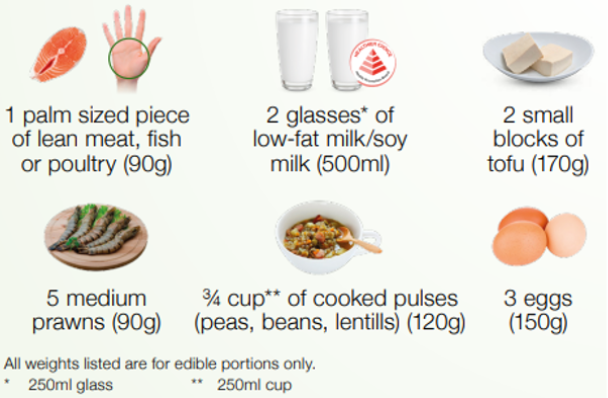ACHIEVE A STRONGER MUSCLE AND BONE STRENGTH TODAY
Maintain your muscle strength1
At the age of 40#, our metabolism (a process where body cells covert foods into energy) starts to slow down and we require lesser energy from food. We eat lesser due to poor appetite, illness or physical limitation (e.g. dentures). It is important to have nutrient-rich foods in our daily meals.
WHY NUTRIENTS-RICH FOODS?
Our digestion slows down, affecting absorption of nutrients, therefore it is important for us to have more nutrient-rich foods. Nutrient-rich foods are high in vitamins, minerals and other nutrients that are important for health. These foods are lower in energy yet packed with goodness of vitamins and minerals needed for our daily needs.
Did you also know that once we reach our 40s, we lose up to 8%^ of our muscle mass every 10 years? The loss of muscle can affect our affecting muscle strength. Without strength and energy, it might be hard for us to keep doing the things we love.
It is important for us to start early to have enough protein in our diet to maintain muscle health. Protein helps to support tissue building and growth. It can help to reduce muscle loss and promote wound healing if you have been sick or have had surgery.
Aim for 3 servings of protein each day. Start your day with a glass of milk with high calcium and protein or eat a variety of foods to attain your daily protein requirement each day.
Example of one serving of protein

Stronger bone strength2
Bones play a key important role in our lives, they hold the tissues of your body, giving it shape and strength. Bone should last an entire lifetime. Over the age of 50, we are at a higher risk of losing bone mass faster than it can be replaced. This impose a challenge to many of us.
Inadequate intake of calcium places one at risk of osteoporosis – a disease that make bones fragile and more likely to fracture. When osteoporosis happens, it affects the body’s mobility and quality of life. The recommended calcium for adult over 50 years old is 1,000mg. Start your day with a glass of milk with high calcium and protein or eat a variety of foods to attain your daily calcium requirement each day.
| Food | Serving Size | Calcium Content (mg) |
|---|---|---|
| Dairy Products | ||
| High-calcium milk powder | 4 scoops (25g) | 500 |
| Low-fat milk | 1 glass (250ml) | 380 |
| Full-cream milk | 1 glass (250ml) | 300 |
| Low-fat yoghurt | 1 carton (150g) | 240 |
| Low-fat cheese* | 1 slice (20g) | 200 |
| Non-dairy foods | ||
| Canned sardine (with bones) | 1 fish (80g) | 270 |
| Dried ikan bilis (with bones) | 2 tablespooons (40g) | 270 |
| Siken tofu | package (150g) | 100 |
| Tau kwa | 1 small cake (90g) | 150 |
| Ohal (raw) | 1 mug (50g) | 85 |
| Baked beans, canned* | can (210g) | 110 |
| Kai lan, cooked | 1 mug (100g) | 195 |
| Spinach, cooked | 1 mug (100g) | 140 |
| Chye sim, cooked | 1 mug (100g) | 140 |
| Broccoli, cooked | 1 mug (100g) | 50 |
| Calcium-fortified products | ||
| High-calcium soybean milk | 1 glass (250ml) | 450 |
| Enriched bread | 2 slices (60g) | 100 |
| Calcium-fortified orange juice | 1 serving (240ml) | 350 |
1. Health Hub (April 2016) – The Recipe For Healthy Ageing
2. Health Hub (Dec 2018) – Daily Calcium Intake
^ Keep muscles strong as you age (19 Sep 17). Published at The Straits Time, Singapore
# 7 ways to Stay Healthy after 40 (11 December 2012). Published at Livescience.com